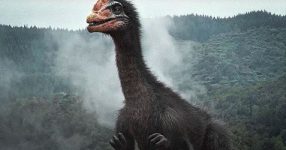In high schools worldwide, students delve into the intricacies of Earth’s evolution, exploring the various transformative eras that shaped our planet. Amid these epochs lies a peculiar span known as “The Boring Billion,” a term coined by paleontologist Martin Brasier to describe an unexpectedly uneventful billion years within the Proterozoic Eon.
The Boring Billion: A Geological Standstill (Keyword: Earth’s Lost Billion Years)
Spanning from approximately 1,800 to 800 million years ago, The Boring Billion marked a prolonged period of geological and evolutionary stagnation. Earth, once dynamic and ever-changing, entered a state of “geochemical stasis” and endured extensive glacial stagnation. Scientist Roger Buick, likening it to Winston Churchill’s words, noted, “Never in the course of Earth’s history did so little happen to so much for so long.”
During this seemingly dull era, the climate remained remarkably stable. Despite Earth being warmer than today, there was an absence of significant climatic shifts. The atmosphere, with low oxygen levels, caused the oceans to turn black and sludge-like, emitting a pungent odor due to the presence of iron and toxic hydrogen sulfide.
Life on Pause: The Biological Slowdown
Contrary to the dynamic processes driving evolution, The Boring Billion witnessed a biological standstill. No freezing or heating of ice occurred, rendering the planet inhospitable. Complex organisms struggled to thrive, with only simple eukaryotes, tiny bacteria, and primitive, non-evolved unicellular organisms flourishing.
Scientists, intrigued by this unprecedented period of dormancy, proposed various theories to explain the halt in Earth’s usual transformations. One prevalent hypothesis suggests that the cooling of the Earth’s core led to a surface-level stillness, impacting even the typically mobile tectonic plates.
However, a closer examination of The Boring Billion reveals a fascinating paradox. While macroscopic changes appeared dormant, microscopic evolution unfolded. The fundamental building blocks of life, particularly simple eukaryotic cells with a nucleus, seized the stillness to progress into more complex organisms.
Microscopic Evolution: Life Finds a Way
In the seemingly monotonous landscape of The Boring Billion, the simplicity of life underwent subtle but crucial transformations. These simple eukaryotic cells, often overlooked, adapted and evolved amidst the stability. The stagnant conditions served as a testing ground for these organisms, paving the way for their eventual development into complex life forms.
The adaptive prowess demonstrated during this billion-year interlude set the stage for life as we know it today. Earth’s Lost Billion Years, despite its uneventfulness on a grand scale, became a crucible for the trial and error essential to life’s evolution.
In conclusion, while The Boring Billion may seem unremarkable at first glance, it holds a unique place in Earth’s history. The stillness on the surface masked a dynamic microscopic evolution that laid the groundwork for the intricate web of life we now inhabit. “Earth’s Lost Billion Years,” as directed by David Kelly, unveils the paradoxical beauty of a seemingly uneventful epoch that silently shaped the course of life on our planet.












